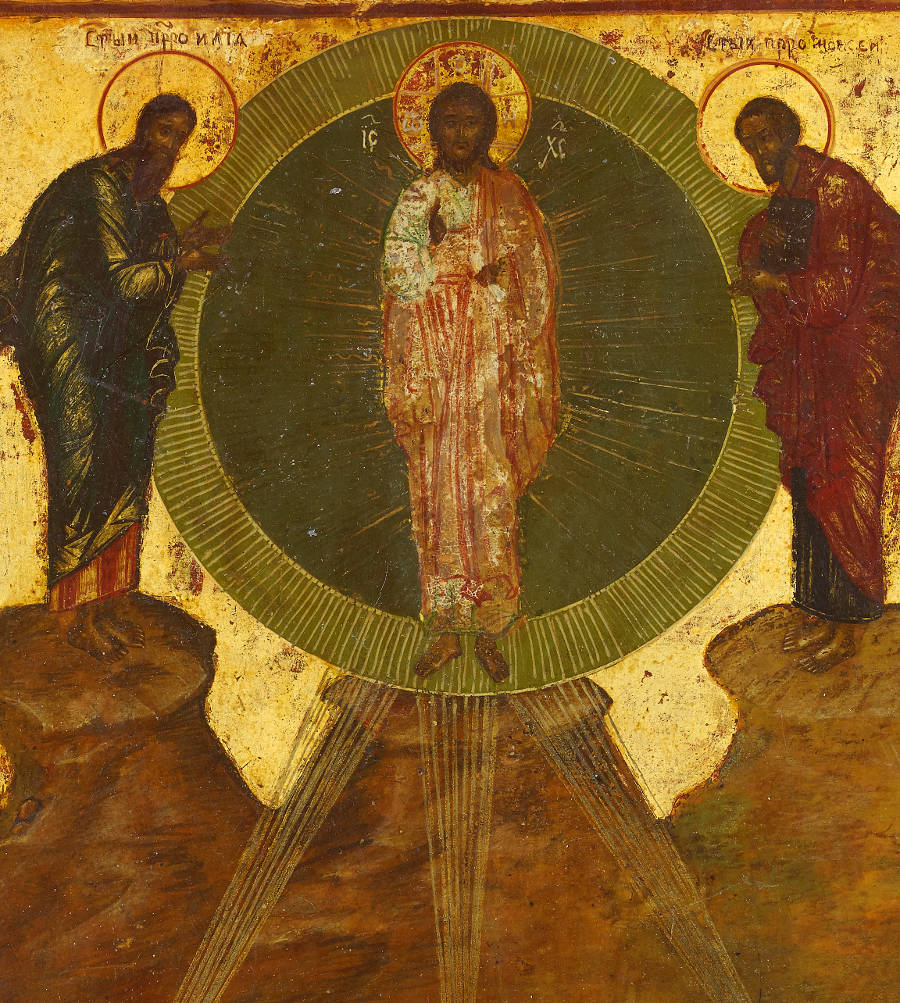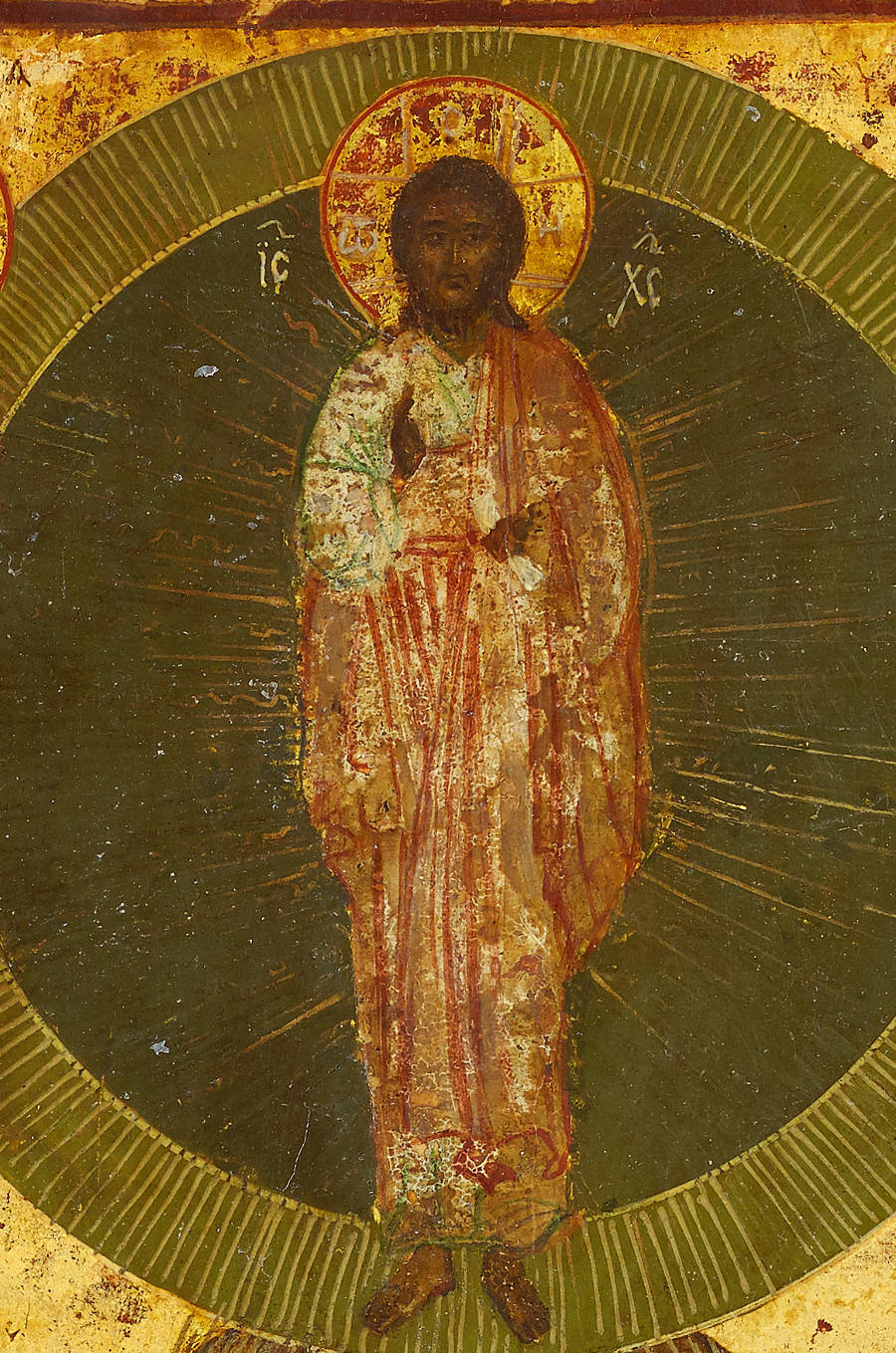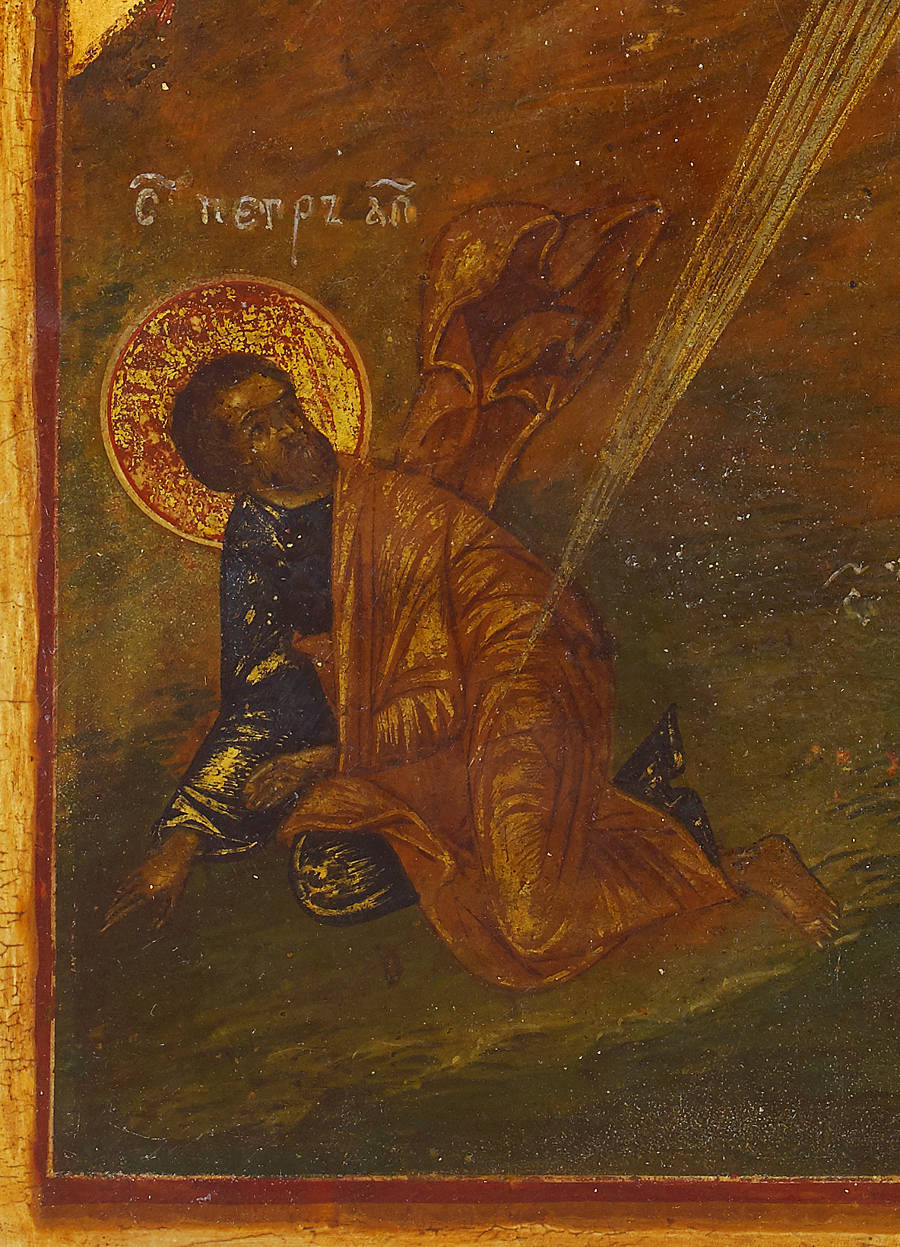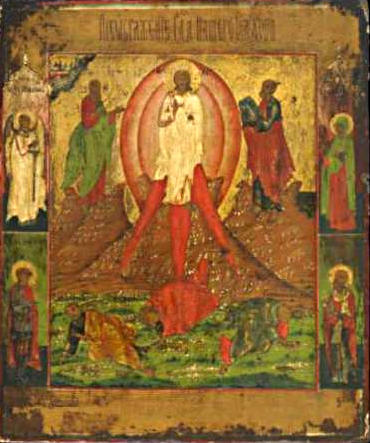 Exhibitions Archive
Exhibitions Archive
 Exhibitions Archive
Exhibitions Archive

AZ22. Transfiguration on Mount Tabor
Russian, 19th century
Panel: 36 x 31.3 cm; thickness 2.3cm![hideselects= [On] header =[Convert size] body = [Click here to show the size in inches] Click here to convert metric size to imperial](images/inches.gif)
Provenance: Brussels art market
Condition: Old restoration on lower border; some retouching on the shoulder and robes of the central figure.
Inscriptions: In Old Slavonic: (Upper border) Obrazh Preobrazhenie [Bozhia?] ‘Image of the Transfiguration [of the Lord?]’. Above the disciples: ‘Peter’, ‘James’, ‘John’. Above the prophets: ‘Holy Prophet Ilya’, Holy Prophet Moses’. Inscription in Greek: In the nimbus around Christ’s head Ω ΟΝ (‘HO ON’): ‘I AM THAT I AM’. (Exodus 3:14)); IC XC, ‘Iesus Christos’,


No. 22. Detail

No. 22. Detail

No. 22. Detail
‘And after six days Jesus taketh Peter, James, and John his brother, and taketh them into a high mountain apart,(2) And was transformed before them: and his face did shine as the sun, and his raiment was white as light. (3) And, behold, there appeared unto them Moses and Elias talking unto him. (4) Then answered Peter and said unto Jesus, Lord, it is good for us to be here: if thou wilt, let us make here three tabernacles; one for thee, one for Moses and one for Elias. (5) While he yet spake, behold, a mighty cloud overshadowed them, and behold a voice out of the cloud, which said, This is my beloved Son, in whom I am well pleased; hear ye him. (6) And when the disciples heard it, they fell on their face and were sore afraid. (7) And Jesus came and touched them, and said, Arise, be not afraid. (8) And when they had lifted up their ayes, they saw no man, save Jesus only.’ (Matthew 17:1-9, A.V.).
The scene, is based on the New Testament text quoted above, (it is also in Mark 9:2-9, 1-9 and Luke 9:28-36). In the upper part of the icon we see Christ within concentric circles of dark and pale green, transfigured in glory with Elijah to our left and Moses on the right. Below, Peter, James and John are seen in attitudes of astonishment and dismay.
Our icon can be compared with a Russian icon of the Transfiguration, dated to mid-19th century in the British Museum and tentatively ascribed to Nizhny Novgorod1. There is a similar tonality of colour. Both icons have landscapes reflecting western naturalism. (Fig. 1).

Fig. 1. Transfiguration. 19th century. British Museum.
An extended study of the Transfiguration can be seen at: http://www.templegallery.com/main.php?mode=3&p1=2302. See also: https://iconreader.wordpress.com/2011/08/06/transfiguration-icon-the-event-and-the-process/ and https://www.johnsanidopoulos.com/2012/08/an-interpretation-of-icon-of.html
Fig. 2. Back of panel
Footnotes:-